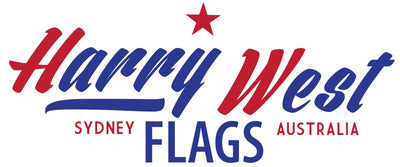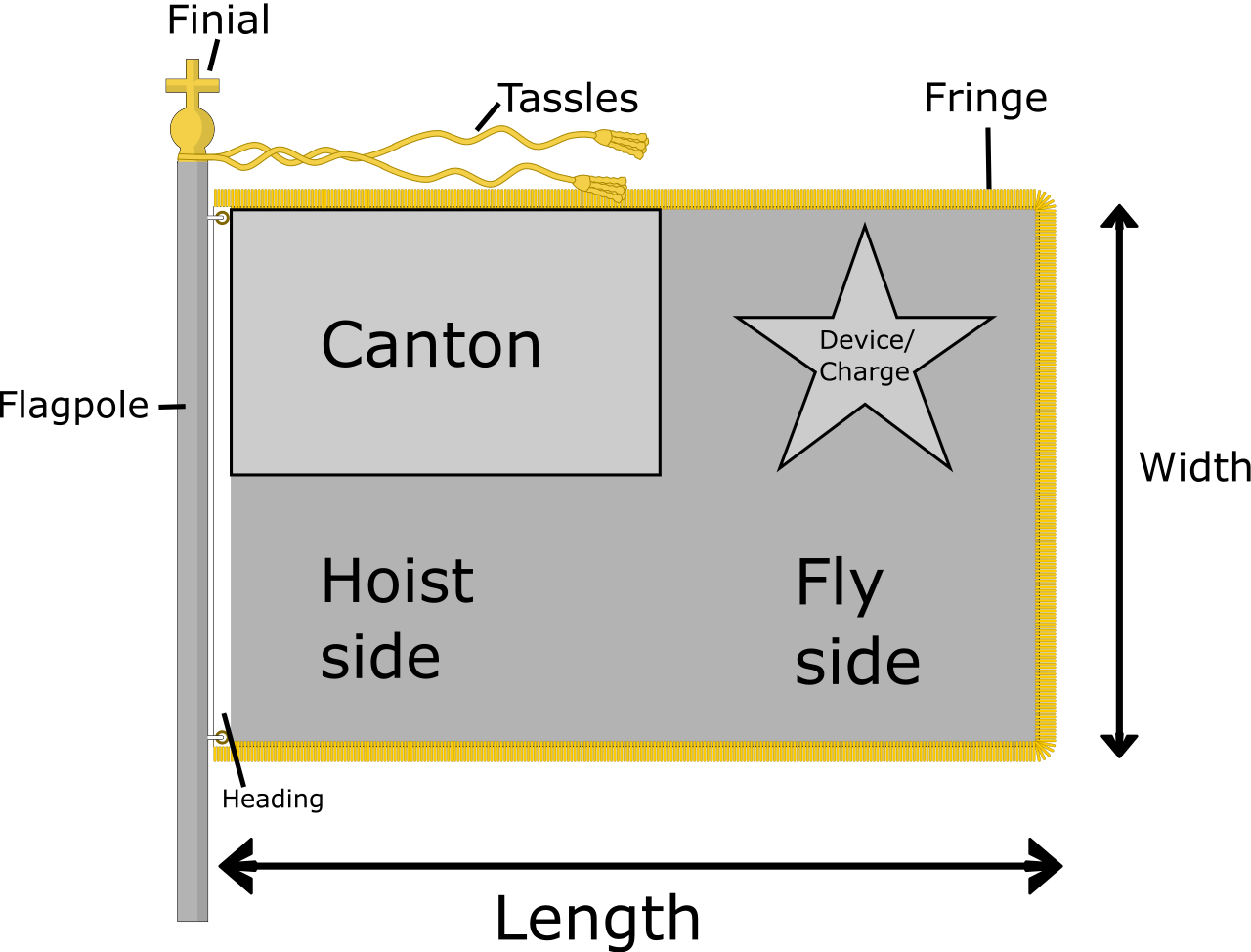Introduction: Our Credentials
Here at Harry West Flags, we have been in business, making high quality Australian made flags for over 115 years, so we are pretty well versed in flag terminology. We understand there are many words and concepts associated with flags that can be confusing to most people who don't have a background in flags or vexillology, so we are here to clear up any confusion.
Yards: The Measurement of Flags
One of the most common terms people have difficulty understanding when it comes to flags, is the term 'yard''. Although some companies use metres or feet to size flags these days, flags were traditionally sized in yards and we continue this tradition to this day. 1 yard is equivalent to 0.9144 meters or 915 mm. The most common flag size is 2 yard which means the length from hoist to fly is 1830mm and the width is 915mm (if the flag has a ratio of 2:1).
Hoist and Fly: Flag Dimensions and Proportions
Understanding the basic structure of a flag is fundamental to grasping its terminology. The hoist refers to the vertical side of the flag, attached to the flagpole, while the fly is the horizontal side that flutters in the wind. Dimensions and proportions, often expressed as ratios, contribute to the aesthetic appeal and proper display of flags.
Canton: The Chief Quarter
The canton is a distinctive area in the upper-left corner of a flag, typically containing symbols, colours, or emblems that hold significant meaning. It serves as a focal point and contributes to the overall identity of the flag. For example, the canton of the Australia flag is the Union Jack.
Flag Field: The Main Background
The main background of a flag is referred to as the field. The field can be a single solid colour, a combination of colours, or even feature intricate patterns. The choice of the field plays a crucial role in conveying the intended message or identity of the flag.
Charge: Flag Emblems and Symbols
Charges are the symbols, emblems, or designs that appear on the field of a flag. They can range from simple shapes to complex illustrations, each carrying its own symbolic significance. The charge is a powerful tool for conveying a message or representing cultural, historical, or political aspects.
Fimbriation: Adding Edges
Fimbriation involves adding a border or edging to charges on a flag. This technique enhances visibility and definition, especially when different colors or patterns are adjacent. Fimbriation is a subtle yet effective way to accentuate the details of a flag's design.
Crest: Topmost Part of a Coat of Arms
In flags, the crest is the topmost part, often found above the shield or main design. While not all flags have crests, they are prevalent in heraldic flags and those representing historical or royal significance. The crest adds a distinctive element to the overall design, contributing to the flag's uniqueness.
Standard, Ensign, Banner and Pennant: Distinct Flag Types
Flags come in various forms, each with its own terminology. A standard is typically a flag carried by a leader or as a symbol of an organisation. An ensign is a flag flown on a ship, while a banner is a square or rectangular flag often used for decorative or ceremonial purposes. A pennant is a flag that is larger at the hoist than at the fly and can be triangular, tapering or swallow-tailed. A burgee is the pennant that identifies a recreational boating organization.
Conclusion
We find that the more you know about flags, the easier and more intuitive the terminology becomes. Feel free to contact us via email (office@harrywestflags.com.au) or phone ( 02 9925 0722) if you have any further questions you need clearing up or even if you just want to discuss the wonderful world of flags.



